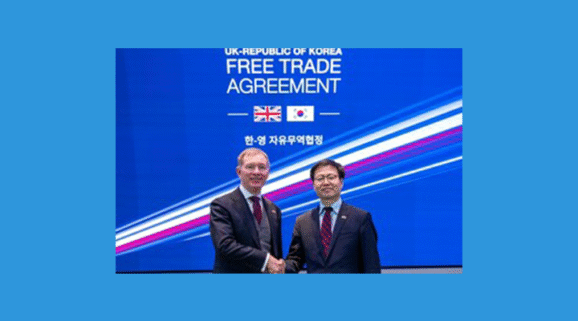Achieving equity through transparency

Kelly Metcalf of Fujitsu UK looks at the impact of the EU’s new directives on pay transparency and CSR, and the importance of ensuring organisations are committed to equal pay for equal work
The gender pay disparity is not a new topic, with countless column inches dedicated to talking about how businesses can close – and eventually eliminate – the long-standing gap between men and women’s salaries. In that regard, the EU’s 2023 Gender Pay Transparency Directive, and the Corporate Social Responsibility Directive 2024 (CSRD) represents a changing tide, with governments around the continent now poised to compel businesses to report their pay gaps and spell out how they are doing as nations.
This shift will go a long way towards addressing wage disparities in compliant countries and will likely even influence those outside the EU. And it’s timely too, given the EU’s gender pay gap sat at 13% the last time it was measured.
Companies need to be preparing for these regulations now, and coincidentally, better transparency may itself be the answer, whether that’s publishing pay alongside job adverts, or communicating wage structures and how pay is determined more openly with staff. While it may be optimistic to expect organisations to do this immediately, if the entire business community heads in this direction we will all stand to gain. It’s all about playing the long game when it comes to enacting change – any progress or positive steps taken by businesses will be seen as a success.
How Europe’s workers will be affected, and benefit
The introduction of the EU Pay Transparency Directive means member states have until 2026 to implement pay gap reporting into national law or, for those that already mandate it, to broaden the scope of existing requirements. Based on this timeline, organisations will then have between four to eight years to comply, depending on their size.
This will chart a clear direction of travel towards increasing transparency around how much people are paid. Not only will organisations be required to develop objective and neutral criteria for pay scales, it will also give employees the right to demand written information on how their own pay stacks up against others performing similar work. Plus, by compelling employers to conduct audits of roles where the pay gap exceeds 5%, there will soon be nowhere to hide for businesses that aren’t taking a comprehensive view of gender and ethnic equity.
The CSRD, on the other hand, will require member states to track and report where their national wage gaps sit between 2025 and 2027, essentially creating a scorecard for the reform efforts of their governments and businesses. Whilst this is already a legal obligation in some countries such as Ireland and Spain, the requirement being region-wide boosts the expectation being placed on organisations to not just report on gaps, but ensure they are taking action to close them or risk having your shortcomings live on in the public domain. Impacts will, unsurprisingly, be most acutely felt in the EU, but that’s not to say there won’t be ripples felt in surrounding nations – in fact, there almost certainly will be. For organisations that operate across Europe, it makes sense to implement these reporting requirements across the board regardless of where they are headquartered, as it is easier to set policies broadly rather than selectively.
Employees may well expect this too, inspired by the EU’s efforts to exert pressure on their organisations to consider where they can adopt similar practices. Practising pay transparency isn’t just about token gestures, as there are plenty of benefits that come with it, especially when it’s a matter of being open with staff and candidates as well as regulators.

Being open, but not just for transparency’s sake
Improvements, such as better transparency regarding pay rates ensures that organisations are committed to compensating people equally for equal work, an ambition we should all be striving towards. No longer will employers have the leeway to set pay packages how they please, which opens the door to their individual biases to interfere. Taking a closer look at wage gaps will also unearth inequalities and the factors that have created them. If there are seniority disparities for example, which traditionally impact women and people of colour, these will become crystal clear once wage data is passed through.
Beyond that, it also sets a more level playing field for all genders. Research has found men to be more likely to negotiate their starting pay than women. By setting the bar from the offset, it takes the responsibility away from the applicant to fight for the pay they want. This also forces employers to set expectations early, which can avoid unconscious biases creeping into the pay setting process later on. Achieving better equity will not be without its challenges, but businesses that start practising better pay transparency internally, will be the ones best positioned to showcase good progress once reporting obligations come into effect.
At its core, achieving better pay transparency hinges upon having clear pay structures that can then be communicated to employees and prospects. However, this is easier said than done for many organisations that have grown organically over time through mergers, acquisitions or the like. They may have multiple different pay systems at once, meaning they could be complex to explain to employees at best and at worst, potentially creating a sense of inequity among individuals that realise they are on lower pay than their peers.
One immediate step organisations can take is considering where they can improve transparency with workers around how pay rates are actually determined. By being proactive, leaders can minimise the risk of their pay reporting causing issues with staff. Organisations should already be thinking about how they can better explain to employees and future candidates the ways they determine pay and plan to address inconsistencies. Leaders won’t want discontent to brew in their teams if people see that they are being paid less than colleagues in similar positions. Therefore the onus is on them to clearly lay out what their pay data means and how the organisation plans to address inequities.
Another move would be to carry out voluntary equal pay audits to help identify and eradicate pay gaps, as an action plan should take shape organically as problem areas become clear during the process.
A more diverse, inclusive and better workforce
Ultimately, better transparency cannot simply be a matter of public reporting. Businesses will need to critically assess why gaps exist and where underrepresentation has been allowed to fester if they are to have any hope of addressing either problem, and that means being open and honest about where they are today and where they plan to be.
A diverse workforce is essential in a modern business environment, where companies are dealing with stakeholders from all over the world who are increasingly scrutinising the companies they work with. And the best way to foster one is by ensuring there is representation throughout an organisation. That simply cannot happen unless companies have a plan – if it could, it would have happened already.
Transparency enables workers, customers and stakeholders to hold organisations to account for the progress they make (or lack of it) and turns diversity, equity and inclusion from a “nice to have” to an absolute must.
About the Author

Kelly Metcalf is Head of People Experience at Fujitsu UK.














